What Famous Pieces of Art Are in the Notre Dame Cathedral
On 15th April, the globe watched in astonishment and horror as one of Paris'southward most celebrated historic landmarks was engulfed in flames, causing the main construction of the 12th-century cathedral to eventually collapse. Notre Matriarch (meaning 'Our Lady') is approximately 850 years and is much loved for its French Gothic architectural manner and for its cute stained glass windows, known equally the 'Rose Windows'.
More than merely a religious building, the cathedral has ever had a profound cultural and symbolic impact on artists and literary figures alike, from Victor Hugo to Henri Matisse and Marcel Proust. And of form, it was the home to our favourite bong-ringer – Quasimodo.
To celebrate the historic cathedral that has survived centuries of turbulent history including multiple revolutions and ii Globe Wars, here is a selection of artistic depictions on Fine art Britain.
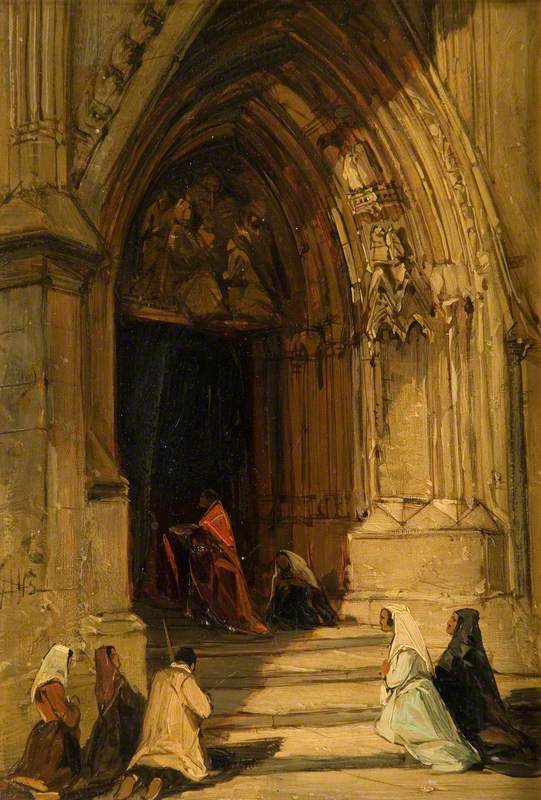
Painted in 1845, this depiction of the cathedral's north door past artist James Holland (1799–1870) was created half a century afterwards the cathedral had been desecrated during the French Revolution.
At the end of the eighteenth century, the newly formed revolutionary country turned hostile towards the Catholic church. According to sources, anti-monarchist forces mistook statues on the cathedral for kings of France, dragging the sculptures to the guillotine where they were beheaded in 1793.
In 1804 (subsequently the violent deposition of the monarchy), Emperor Napoleon I was coronated within the historic landmark. The moment was painted by the Neoclassical painter Jacques Louis David (1748–1825).
In 1831, Victor Hugo (1802–1885) published the wildly popular Gothic novel, The Hunchback of Notre-Dame, which detailed the historic site's neglect later on years of revolution. Describing it equally a 'symphony in stone', Hugo turned France's attention towards the building'southward dilapidated condition, leading to much-needed renovations between 1844 to 1864.
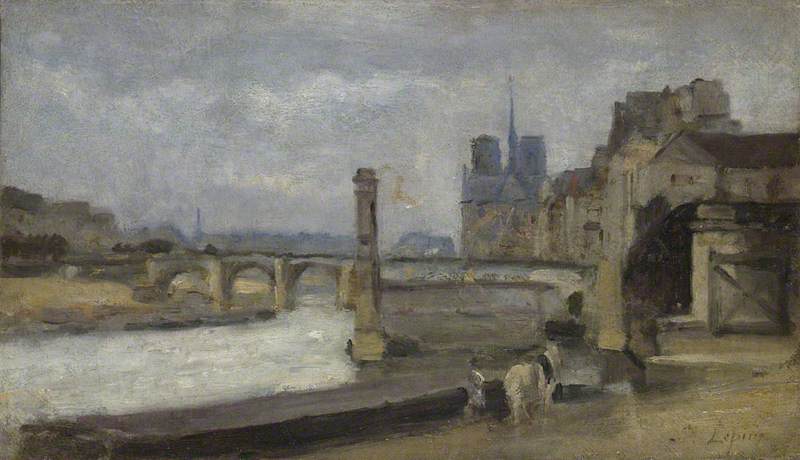
A French painter whose speciality was depicting the Seine, Stanislas Lépine (1835–1892), captured the apse of Notre Dame in this painting of the Pont de la Tournelle (Tournelle bridge) dated betwixt 1862–1864.
By the 1860s, Emperor Napoleon III (the nephew of Napoleon I) had established the 2d French Empire and commissioned Georges-Eugene Haussmann to commence on an ambitious and massive public works project that would renovate and reshape the urban construction of Paris.
Before the 'Haussmanisation' of Paris, the cathedral was surrounded by slums and housing condensed together on narrow, medieval streets. Napoleon ordered Haussmann to 'open up' (or demolish) the expanse, then that Notre Dame could be viewed properly, thus creating the large public square that stands in front end of the cathedral today.

French painter Jules Lessore (1849–1892) depicted the cathedral some fourth dimension in the mid to late nineteenth century. Lessore emigrated to England in 1871 (during the Franco-Prussian war) and fathered Thérèse Lessore, a painter whose fame would eventually surpass her male parent'south.
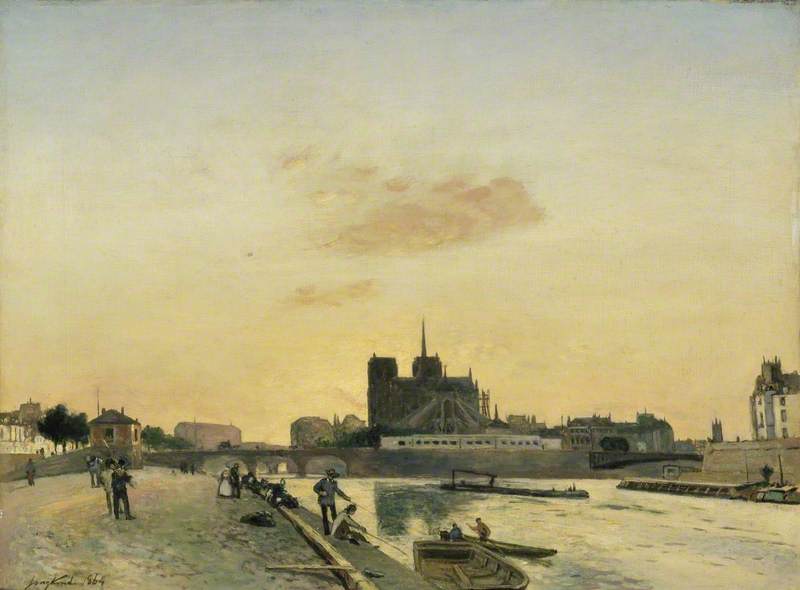
This painting by Dutch artist Johan Barthold Jongkind (1819–1891) shows Notre Matriarch in the 1860s when the effects of Haussmanisation had cleared the area surrounding the cathedral. A precursor to Impressionism, Jongkind painted Notre Dame oftentimes, with 1 of his most famous depictions housed today in the Musée d'Orsay.
This painting, showing the effect of the setting sun over the cathedral, was painted for the Bordeaux collector, Théophile Bascle, in 1864.
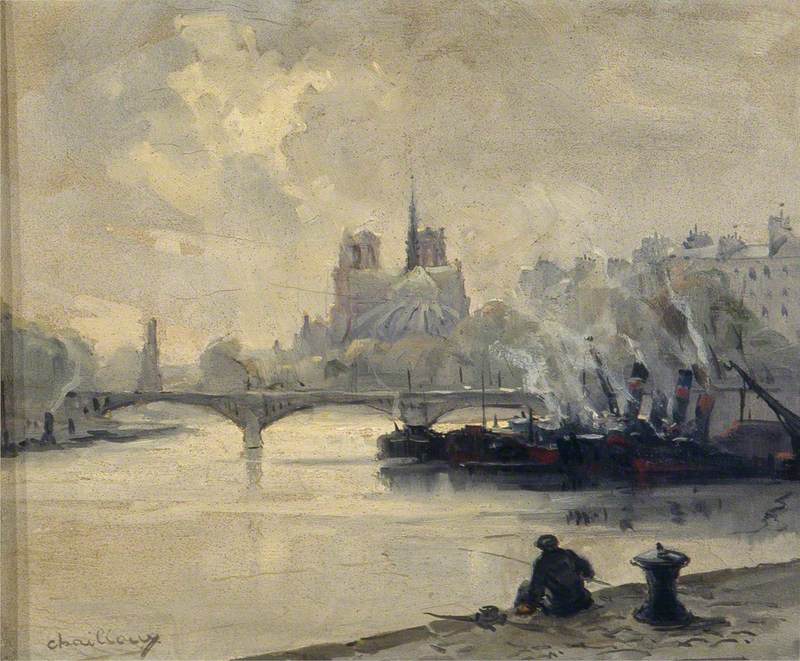
In 1905, Notre Dame officially became the holding of the French state rather than the Catholic Church building in a move towards the secularisation of France.
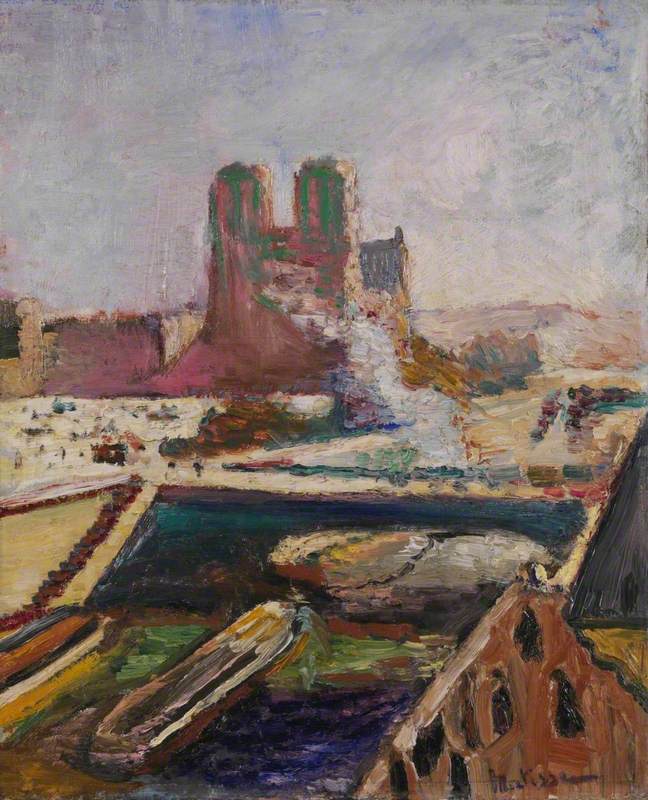
Henri Matisse (1869–1954) famously adored Notre Dame, which he could see from his studio located on the Quai Saint-Michel (he lived and worked there from 1899 until 1907).
His many depictions of the cathedral painted between 1900 and 1914 bear witness the celebrated landmark at different times of the solar day, but likewise reveal his dramatic artistic evolvement into (what would later be coined in 1905) every bit the 'Fauvist movement'.
View of Notre Dame (1914) shows Matisse's radical departure from conventional practices of form and color and a move towards abstraction.
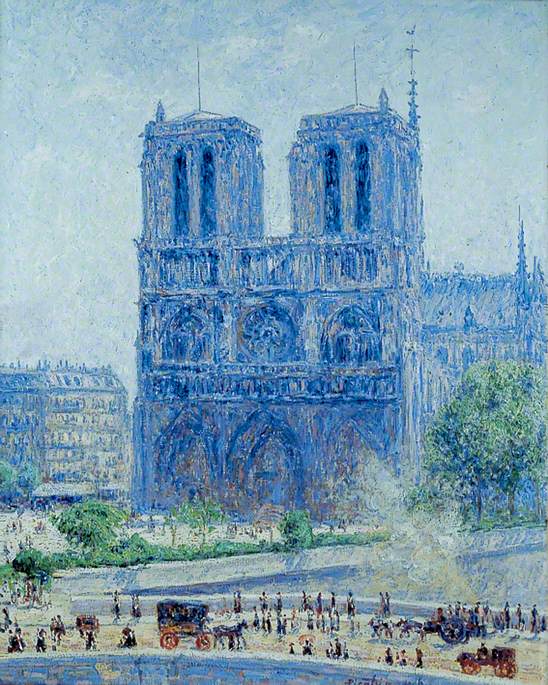
In 1906, avant-gardist Francis Picabia (1879–1953) painted Notre Dame in the Morn Sun. Similar Matisse, Picabia was fixated with the cathedral, painting it multiple times at the starting time of the twentieth century – when he was still dabbling with Impressionism. His depictions of Notre Dame were most likely inspired by Claude Monet's (1840–1926) impressionistic paintings of Rouen Cathedral.
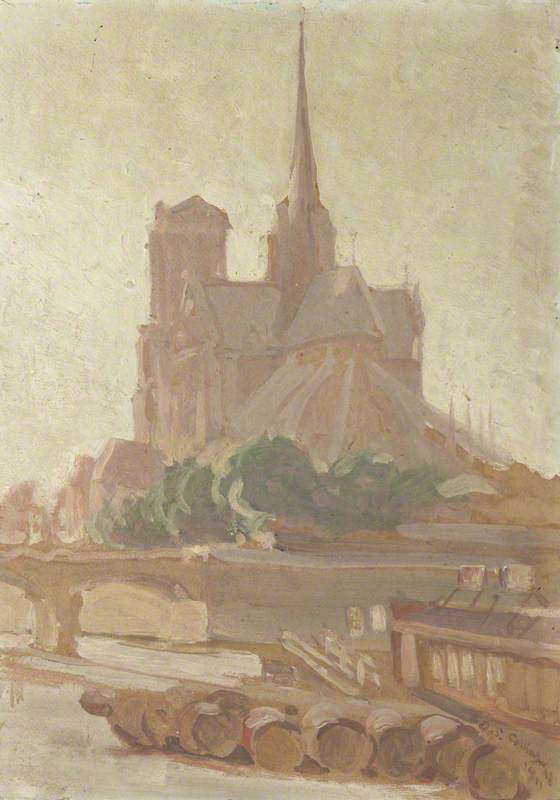
In 1911, shortly before the start of the First Earth War, artist Dora Altounyan (1886–1964) painted Notre Dame.
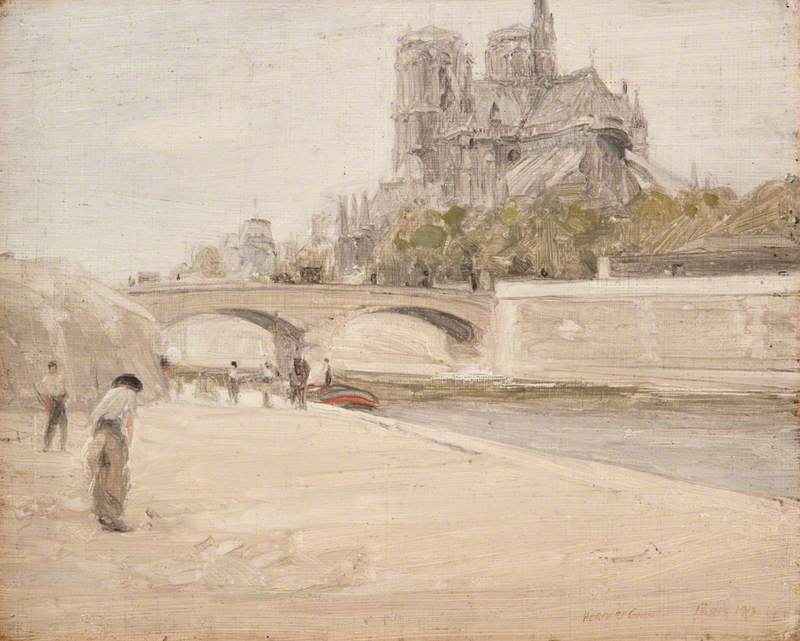
In 1913, the Scottish-British artist Herbert James Gunn (1893–1964) also painted the cathedral, and ten years later Leonard Squirrell (1893–1979) would visit Paris to pigment the Gothic landmark.

Notre Matriarch, Paris 1924
Leonard Squirrell (1893–1979)
Colchester and Ipswich Museums Service: Ipswich Borough Council Collection
Notre Dame survived both the First and Second World Wars, announcing the liberation of Paris in 1944 when its bells rang out triumphantly.
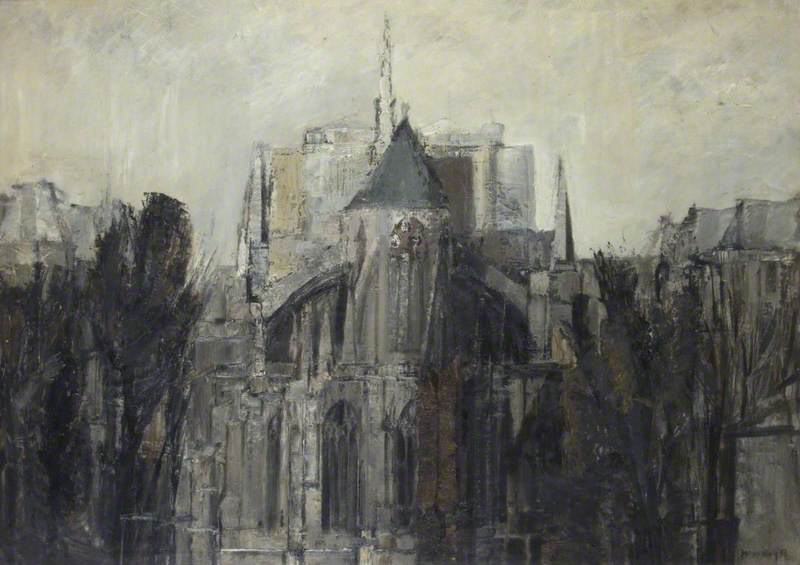
In the post-state of war era, British creative person Bernard Kay (b.1927) created this depiction.
Finally, in 1999, Geoffrey Scowcroft Fletcher (1923–2004) painted Notre Matriarch, Reflections, showing the iconic north and south towers of the cathedral reflected in the waters of the Seine.
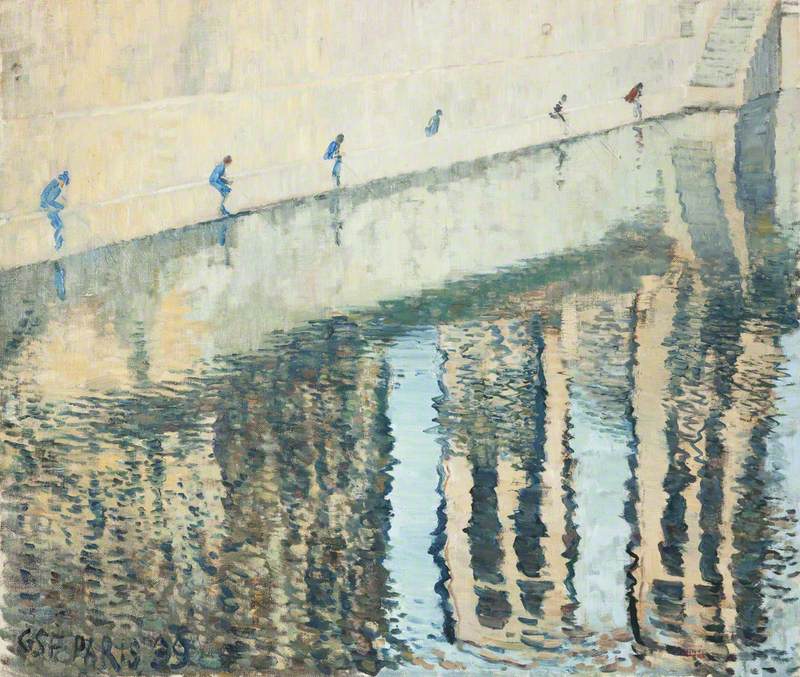
In the wake of the tragic fire that has demolished a large proportion of the Gothic cathedral's original roof – although we do non notwithstanding know the full extent of the harm or cause of the bonfire – information technology seems advisable to reflect on the history of i of Europe's most-loved historical landmarks.
Remarkably, Notre Matriarch cathedral withstood the examination of time – miraculously indelible and surviving many conflicts, revolts and wars. Information technology has also been restored, renovated and rebuilt many times over.
The argent lining to this catastrophe is that the new ambitious renovations will ultimately boost its longevity while reminding us to not accept for granted what we take left of this cultural and historical treasure.
Lydia Figes, Fine art UK's Content Creator
Did you know?
- It took approximately 200 years to build Notre Matriarch by roughly 1,000 workers during the reign of Louis 7. Construction began in 1163 lasting until 1345
- A fire bankrupt out at the cathedral in the thirteenth century, prompting renovations of the site between 1230 and 1240
- In the sixteenth century, the Huguenots (French Protestants) desecrated statues they believed were idolatrous
- In 1793, during the French Revolution, anti-royalists decapitated statues inside of the cathedral, mistaking Biblical kings for members of the French royal family
- The famous gargoyles adorning the cathedral, featuring prominently in The Hunchback of Notre-Dame, were added during the nineteenth-century restoration
More stories
Artworks
Source: https://artuk.org/discover/stories/notre-dame-cathedral-inspiring-artists-for-centuries
0 Response to "What Famous Pieces of Art Are in the Notre Dame Cathedral"
Publicar un comentario